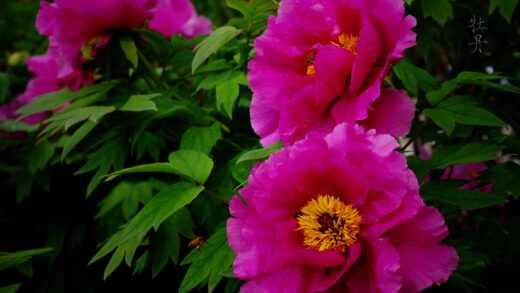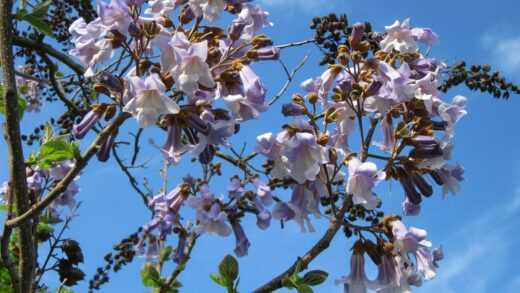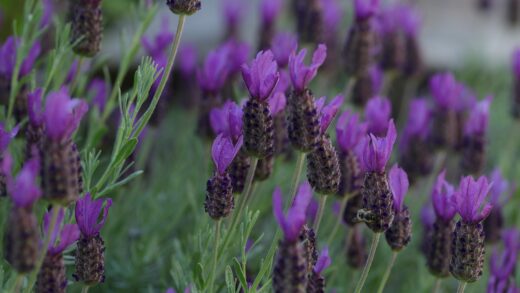The single most important environmental factor influencing the health, vigor, and flowering performance of love-in-a-mist is an abundance of direct sunlight. This plant is a quintessential sun-lover, a characteristic deeply ingrained in its genetic makeup from its origins in the open, sun-drenched landscapes of the Mediterranean. To achieve the classic vision of a thriving patch of love-in-a-mist—with its sturdy stems, lush ferny foliage, and a profusion of jewel-toned blossoms—providing it with a location that receives at least six to eight hours of direct, unfiltered sunlight per day is not just a recommendation, it is an absolute necessity. Insufficient light is the primary cause of weak, leggy plants and a disappointing floral display, a problem that no amount of care in other areas can fully rectify.
Sunlight is the fundamental energy source for nearly all plants, and for a fast-growing annual like love-in-a-mist, a plentiful supply is critical. Through the process of photosynthesis, the plant uses the energy from sunlight to convert carbon dioxide and water into the sugars that fuel its growth. More sunlight equates to more energy, which in turn leads to the development of stronger cell walls, more robust stems, a greater number of leaves, and, most importantly, the resources needed to produce a generous display of flowers. A plant grown in optimal light conditions is simply a stronger, healthier, and more productive plant in every respect.
The physical appearance of the plant is a direct reflection of the light it receives. In full sun, love-in-a-mist grows into a well-branched, bushy specimen with a compact and sturdy habit. The foliage will be a vibrant, healthy green, and the stems will be strong enough to support the flowers and seed pods without bending or breaking. This robust structure is not just aesthetically pleasing; it also makes the plant more resilient to wind and rain, and less susceptible to fungal diseases due to the improved air circulation through its more open form.
Conversely, a plant grown in inadequate light will exhibit a range of tell-tale symptoms. The most obvious is etiolation, or stretching, where the stems become elongated, thin, and weak as the plant literally reaches for a better light source. The spacing between the leaves on the stem will be greater, giving the plant a sparse and spindly appearance. The foliage may be a pale, washed-out green, and the overall plant will be floppy and may require staking to remain upright. This weakened state also makes the plant more vulnerable to pests and diseases.
The importance of full sun
Full sun is technically defined as a location that receives six or more hours of direct, unobstructed sunlight during the peak hours of the day. For love-in-a-mist, meeting and even exceeding this minimum requirement is the key to unlocking its full potential. The intensity of the light is just as important as the duration. The strong, direct light of midday is particularly valuable for powering photosynthesis and driving the plant’s metabolic processes at their most efficient rate. A spot in an open field, a south-facing border, or any garden area that is not shaded by trees, buildings, or other tall plants is ideal.
More articles on this topic
This requirement for full sun influences every stage of the plant’s life cycle. For germination, while some light is beneficial, it is after the seedling emerges that sunlight becomes paramount. Young seedlings need strong light to develop into stocky, healthy plants. Without it, they will quickly become leggy and weak, making them difficult to manage and prone to damping-off diseases. This is why, when starting seeds indoors, a bright, south-facing windowsill is the minimum requirement, and the use of supplemental grow lights is often recommended to provide the necessary intensity.
During the main vegetative growth phase, abundant sunlight allows the plant to build the strong structural framework and the large leaf area needed to support a prolific flowering period. The plant is essentially banking energy during this time, and the more sun it receives, the larger its energy reserves will be. This directly translates into the number and quality of the flowers it can produce. A sun-starved plant simply will not have the stored energy to create a truly impressive floral display.
The final stages of the plant’s life, flowering and seed development, are also heavily dependent on sun exposure. Full sun promotes the development of more numerous and larger flower buds. Furthermore, the vibrant colors of the flowers—the deep blues, purples, and pinks—are often more intense and saturated when the plant is grown in strong light. After pollination, the sun provides the energy needed to ripen the seeds within the pods, ensuring the viability of the next generation and completing the plant’s life cycle successfully.
How light affects flowering
The relationship between light and the flowering of love-in-a-mist is direct and profound. Light acts as the primary signal and the essential fuel for the entire reproductive process. The transition from vegetative growth (producing leaves and stems) to flowering is a hormonally controlled process within the plant, and this process is heavily influenced by environmental cues, with light being the most important. The lengthening days and increasing light intensity of late spring are the primary triggers that tell the plant it is time to shift its focus from growing to blooming.
More articles on this topic
The quantity of light a plant receives has a direct impact on the quantity of flowers it will produce. Each flower bud is a significant energy investment for the plant. In a high-light environment, where the plant is photosynthesizing at its maximum capacity, it has an abundance of energy to allocate to the production of numerous flower buds. This results in a plant that is covered in blooms, providing the spectacular display that gardeners desire. In a low-light environment, the plant’s energy budget is much more limited, and it will respond by producing far fewer flowers, or in some cases, none at all.
The quality of the blooms is also affected by the amount of sunlight. Plants grown in full sun tend to produce larger, more perfectly formed flowers with richer, more vibrant colors. The intense light promotes the production of the pigments that give the flowers their beautiful hues. Furthermore, the “mist” of lacy bracts that surrounds each flower, a key part of its ornamental appeal, is often denser and more intricate on plants that have received ample sunlight throughout their development.
Beyond the initiation and quantity of flowers, sunlight also plays a role in the daily life of the blooms. The flowers of love-in-a-mist will often orient themselves towards the sun, a process known as phototropism, to maximize their exposure to light and warmth, which can make them more attractive to pollinators. The overall duration of the flowering season can also be extended when plants are grown in optimal light conditions, as a healthy, well-energized plant has the resources to continue producing new buds over a longer period.
Growing in partial shade conditions
While full sun is the undisputed ideal, it is sometimes possible to grow love-in-a-mist in conditions of partial shade, although some compromises in performance must be expected. Partial shade is typically defined as a location that receives between three and six hours of direct sun per day. The success in such a location often depends on when that sun exposure occurs. A spot that receives several hours of strong morning sun followed by afternoon shade is generally much better than one that receives only filtered, dappled light throughout the day or a brief period of weak, late-afternoon sun.
In a partial shade location, you should anticipate that the plants will grow taller and more open than their full-sun counterparts. This is a classic shade-avoidance response, as the plant etiolates or stretches to try and reach more light. This can result in a more delicate, airy, and perhaps more “wild” appearance, which some gardeners might find appealing. However, the stems will be weaker and more prone to flopping over, especially after heavy rain or in windy conditions, and they may require some form of support to remain upright.
The most significant impact of partial shade will be on the flowering. The number of blooms will be noticeably reduced compared to a plant grown in full sun. The plant simply does not have the energy reserves to support a massive floral display. The onset of flowering may also be slightly delayed, and the overall blooming period may be shorter. While the plant will likely still produce some of its charming flowers, you should not expect the same density and profusion of color that is achievable in a sunnier spot.
To give the plants the best possible chance of success in a partially shaded area, there are a few things you can do. Ensure the soil is of excellent quality and well-draining to avoid adding any additional stress to the plant. Be particularly careful not to overwater, as the soil will dry out more slowly in the shade. Also, avoid over-fertilizing, as this will only encourage more weak, leafy growth. Finally, providing good air circulation is even more crucial in the shade to help prevent the fungal diseases that thrive in the cooler, damper conditions.
Light considerations for indoor seed starting
When starting love-in-a-mist seeds indoors to get a jump on the season, providing adequate light from the moment of germination is critically important. This is often the stage where home gardeners encounter the most problems. A lack of sufficient light is the number one reason that indoor-sown seedlings become weak, pale, and leggy. These stretched-out seedlings are notoriously difficult to handle and transplant, and they often struggle to adapt once they are moved outdoors, never quite catching up to their direct-sown, sun-grown counterparts.
A bright, south-facing windowsill is the minimum requirement for starting seedlings indoors. However, even this may not be sufficient, especially during the short, often overcast days of late winter or early spring. The intensity and duration of natural light coming through a window are significantly less than direct outdoor sun. The seedlings will often stretch dramatically towards the glass, and you will need to rotate the pots every day to try and encourage more even growth.
For this reason, the use of artificial grow lights is highly recommended and is the best way to ensure you produce high-quality, stocky, and healthy seedlings. Simple fluorescent shop lights work very well for this purpose and are an inexpensive investment. The key is to position the lights very close to the seedlings, just 5 to 10 centimeters above the tops of the plants. This close proximity provides the light intensity they need to grow strong and compact. The lights should be run on a timer for 14 to 16 hours per day to mimic the long days of late spring.
As the seedlings grow, the height of the lights must be adjusted upwards to maintain the optimal distance from the foliage. You will know if the lights are too far away if the seedlings start to stretch. Conversely, if the leaves show signs of bleaching or scorching, the lights may be too close. By providing this intense, direct, and consistent light source from the very beginning, you can grow seedlings indoors that are just as strong and healthy as those that germinate naturally in the full sun of the garden.




















